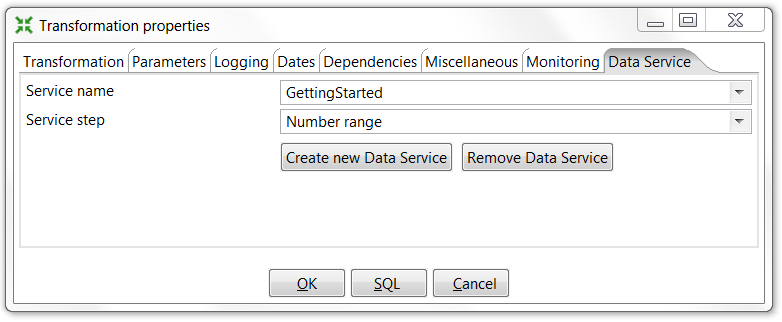Architecture
As with most JDBC drivers, there is a server and a client component to the JDBC driver.
The server is designed to run as a Servlet on the Carte server or the Pentaho Data Integration server.
Where are the data service tables coming from?
You can configure a transformation step to serve as a data service in the "Data Service" tab of the transformation settings dialog:
When such a transformation gets saved there is a new entry created in either the local metastore (under the .pentaho/metastore folder) or in the Enterprise repository on the DI server (in the internal /etc/metastore).
As such, Carte or the DI Server will automatically and immediately pick up newly configured data services from the moment your service transformation is saved.
The carte configuration file accepts a <repository> which will also be scanned in addition to the local metastore.
Reminder: the Carte users and passwords are stored in the pwd/kettle.pwd file and the default user is "cluster" with password "cluster". For the DI server you can use the standard admin or suzy accounts to test with password "password"
Server Execution and Monitoring
During execution of a query, 2 transformations will be executed on the server:
- A service transformation, of human design built in Spoon to provide the service data
- An automatically generated transformation to aggregate, sort and filter the data according to the SQL query
These 2 transformations will be visible on Carte or in Spoon in the slave server monitor and can be tracked, sniff tested, paused and stopped just like any other transformation. However, it will not be possible to restart them manually since both transformations are programatically linked.

